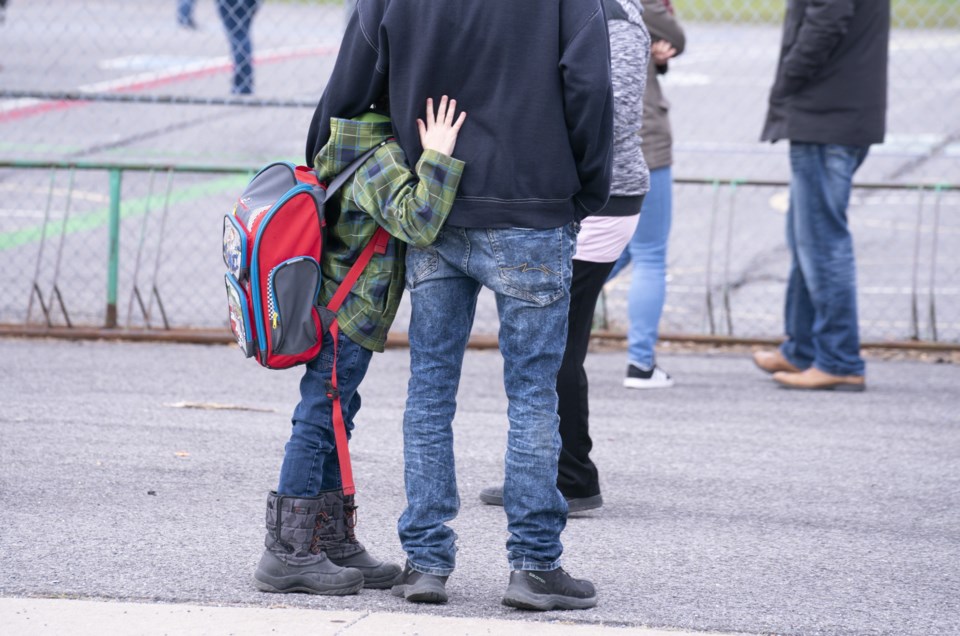Questions abound as families prepare for an unprecedented school year that will be shaped by pandemic precautions.
Is it safe? What happens if there's an outbreak? How do I screen my child for COVID-19?
Each province has their own re-entry framework, but they come with caveats that medical advice is evolving, risk factors are continually shifting and plans could change.
COVID-19 protocols are likely to vary even more at the school board level, and even and school-to-school.
Here's what we know about some of the questions facing many families:
1: I don't know whether I will send my child to class. Are we guaranteed enrolment if I delay that decision, or change my mind mid-year?
Most provinces say schools must offer a remote learning option, although there are provinces that insist on in-class attendance for some students, such as Quebec.
In Ontario, a spokeswoman for Education Minister Stephen Lecce says public school students will have the option to switch from in-class to remote learning at any time, or vice versa.
It's a different matter for private schools which may have greater demand than spots available, says Patti MacDonald, executive director of Canadian Accredited Independent Schools, which represents almost 100 schools across the country.
"Clearly, schools are going to work to fill those spaces. If somebody leaves they will probably fill that space, and so it really would be dependent on their enrolment the following year," she says.
2: How do I screen my child for COVID-19 symptoms? How do I distinguish them from cold or flu symptoms?
The new back-to-school routine will involve screening your child daily for COVID-19, but infectious disease specialist Dr. Anna Banerji acknowledges that's difficult when many children show few or no signs they're sick.
Banerji, an associate pediatrics professor at the University of Toronto, says typical symptoms are identical to what you might see with the flu — runny nose, coughing, sneezing, sore throat and headache. The lack of a fever doesn't mean your child does not have COVID-19, she warns.
Provincial health agencies offer further tips online, with the Alberta government posting a long list of things to watch out for that also include shortness of breath/difficulty breathing, painful swallowing, muscle/joint aches, and pink eye.
"COVID can present as basically anything. And that's why (if there's) any kind of illness at this time, kids need to be home," says Banerji.
3: What happens if a student or staff member contracts COVID-19?
Each province lays out the need for education, health and public health officials to work closely with school boards to monitor and respond to reports of COVID-19 symptoms and cases.
In Ontario, a student or staff member who develops symptoms in school would be separated from others until they can go home.
Schools must report confirmed cases to their superintendent while public health officials would determine whether additional steps are required, such as the declaration of an outbreak or the closure of a school.
Any school connected to a confirmed or probable case may be required to close in-person classes, but that decision would be made in consultation with health officials.
4: My child has severe allergies. How can I be sure they won't be exposed to irritants throughout the day if lunches are eaten in the classroom?
Schools are advised to consider a "no sharing policy" to guard against spreading germs, and that should guard against spreading allergens, too, says Beatrice Povolo, media relations director of Food Allergy Canada.
She welcomes enhanced measures that families of kids with allergies have long advocated for: increased cleaning regimens, hand-washing protocols and adult supervision to discourage food sharing and unsanitary practices.
"We've always wanted to ensure that they're cleaning eating surfaces, clean desks, clean classrooms, et cetera, so having enhanced measures ... is going to be something that parents will need to feel comfortable (with) in terms of the kids going back to school," she says.
5: We abandoned remote learning early in the pandemic and my child has done no schoolwork over the summer. Are they ready to enter their intended grade?
The so-called summer slide — an annual phenomenon in which some students lose knowledge gained from the previous school year — might more accurately be described as a spring-and-summer slide since many kids will have been out of the classroom for nearly six months by September.
The impact of the prolonged break would vary by child and grade but younger kids such as those transitioning from kindergarten to Grade 1 were likely impacted less in academic terms than emotional ones, says Charles Pascal, a professor of applied psychology & human development at the University of Toronto's Ontario Institute for Studies in Education.
This is something teachers will have to address in their return-to-class curriculum, he says, encouraging educators to start the year by determining how well their students meet the requirements for their grade.
If he was a teacher, Pascal says he'd "do that right at the outset, to see if I have to go back and do some kind of transition teaching regarding the things that might have been lost."
This report by The Canadian Press was first published on Aug. 6, 2020.
The Canadian Press



